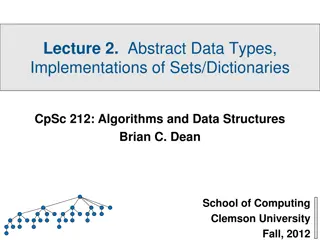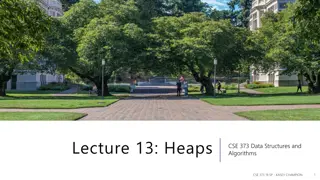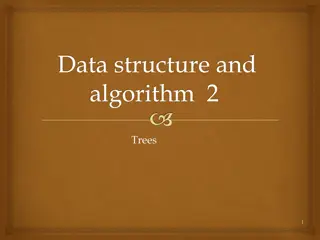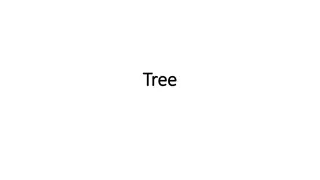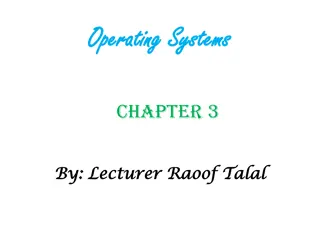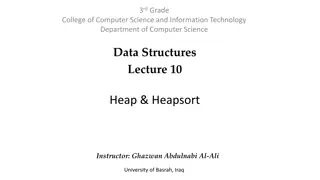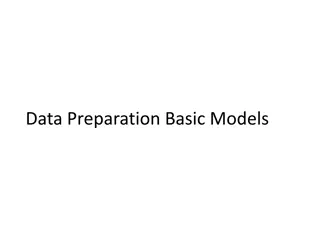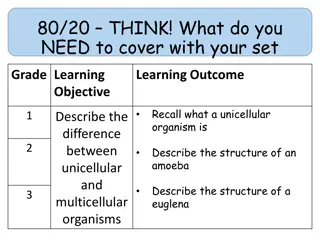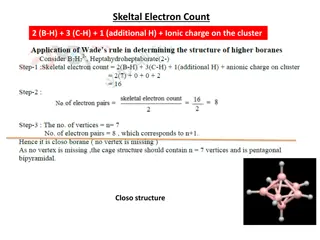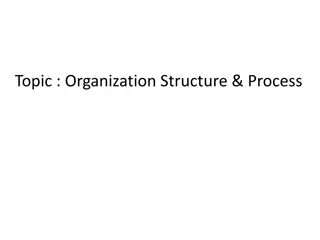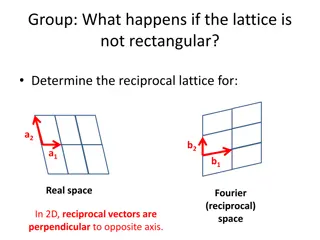Understanding Data Structures: A Comprehensive Overview
Data structures are schemes for organizing data in a computer's memory, influencing program performance. Common structures like queues and binary trees are outlined, illustrating their organization and use cases. The choice of data structures impacts task efficiency, with programmers analyzing data nature to select appropriate structures.
Download Presentation

Please find below an Image/Link to download the presentation.
The content on the website is provided AS IS for your information and personal use only. It may not be sold, licensed, or shared on other websites without obtaining consent from the author. Download presentation by click this link. If you encounter any issues during the download, it is possible that the publisher has removed the file from their server.
E N D
Presentation Transcript
-Definition of data structure -Commonly used data structure -How choice data structure -Queue data structure -Binary data structure -Queue is good for what ? -Binary tree if good for what ? Explain how it works Example -built data structure array and list -Difference between array and list Ali Akbar Mohammadi 1
Data Structures A data structure is a scheme for organizing data in the memory of a computer. Some of the more commonly used data structures include lists, arrays, stacks, queues, heaps, trees, and graphs. Binary Tree Ali Akbar Mohammadi 3
Data Structures The way in which the data is organized affects the performance of a program for different tasks. Computer programmers decide which data structures to use based on the nature of the data and the processes that need to be performed on that data. Binary Tree Ali Akbar Mohammadi 4
Example: A Queue A queue is an example of commonly used simple data structure. A queue has beginning and end, called the front and back of the queue. Data enters the queue at one end and leaves at the other. Because of this, data exits the queue in the same order in which it enters the queue, like people in a checkout line at a supermarket.
Example: A Binary Tree A binary tree is another commonly used data structure. It is organized like an upside down tree. Each spot on the tree, called a node, holds an item of data along with a left pointer and a right pointer. Binary Tree
Example: A Binary Tree The pointers are lined up so that the structure forms the upside down tree, with a single node at the top, called the root node, and branches increasing on the left and right as you go down the tree. Binary Tree
Choosing Data Structures By comparing the queue with the binary tree, you can see how the structure of the data affects what can be done efficiently with the data.
Choosing Data Structures A queue is a good data structure to use for storing things that need to be kept in order, such as a set of documents waiting to be printed on a network printer.
Choosing Data Structures The jobs will be printed in the order in which they are received. Most network print servers maintain such a print queue.
Choosing Data Structures A binary tree is a good data structure to use for searching sorted data. The middle item from the list is stored in the root node, with lesser items to the left and greater items to the right.
Choosing Data Structures A search begins at the root. The computer either find the data, or moves left or right, depending on the value for which you are searching. Each move down the tree cuts the remaining data in half.
Choosing Data Structures Items can be located very quickly in a tree. Telephone directory assistance information is stored in a tree, so that a name and phone number can be found quickly.
Choosing Data Structures For some applications, a queue is the best data structure to use. For others, a binary tree is better. Programmers choose from among many data structures based on how the data will be used by the program.
Data Structures There are two built-in data structures that can be used to organize data, or to create other data structures: Lists Arrays
Lists A list is an ordered set of data. It is often used to store objects that are to be processed sequentially. A list can be used to create a queue.
Arrays An array is an indexed set of variables, such as dancer[1], dancer[2], dancer[3], It is like a set of boxes that hold things. A list is a set of items. An array is a set of variables that each store an item.
Arrays and Lists You can see the difference between arrays and lists when you delete items.
Arrays and Lists In a list, the missing spot is filled in when something is deleted.
Arrays and Lists In an array, an empty variable is left behind when something is deleted.







